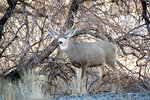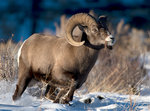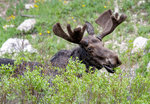Clear, 38° F
Above average precipitation, lower July temperatures and a mild winter in the spring and summer are good for the Cody region’s wildlife, according to the Game and Fish Department’s 2022 …
This item is available in full to subscribers.
The Powell Tribune has expanded its online content. To continue reading, you will need to either log in to your subscriber account, or purchase a subscription.
If you are a current print subscriber, you can set up a free web account by clicking here.
If you already have a web account, but need to reset it, you can do so by clicking here.
If you would like to purchase a subscription click here.
Please log in to continue |
|







Above average precipitation, lower July temperatures and a mild winter in the spring and summer are good for the Cody region’s wildlife, according to the Game and Fish Department’s 2022 hunting forecast.
If these same conditions are consistent through the end of summer and into fall, wildlife populations will reap the benefits.
Pronghorn
The Carter Mountain pronghorn research project concluded with only a few collars still active within the herd. This research project provided excellent insight into pronghorn movements and seasonal ranges. Pronghorn populations and hunting success were down last year in much of the southern portion of the Big Horn Basin, and licenses were reduced for the 2022 season in a majority of these areas. The northern portion of the Big Horn Basin’s pronghorn herds are relatively stable. Early field observations suggest better fawn production throughout much of the region compared to what was observed in 2021. For those who drew pronghorn licenses within the region, hunting should be similar or better than last year.
Deer
Winter survival appears to be at or above average throughout much of the region. Mule deer fawn production appears to be better than last year based on preliminary field observations. The region observed below-average fawn production in most of the deer herds during the 2021 deer classifications. A majority of mule deer herds within the region are currently below population management objectives. Hunters should expect conditions and success to be similar or slightly improved compared to 2021. Prolonged drought and increasing chronic wasting disease prevalence have had a negative impact on Bighorn Basin deer herds over the past several years. Managers are hopeful the recent positive trends in precipitation will provide a needed boost to mule deer populations.
Elk
Most herds continue to perform well within the region, with many exceeding management objectives. The region developed some new seasons within the Medicine Lodge herd in the Bighorn Mountains — Hunt Areas 41 and 45 — to address this herd being chronically above its population management objective. Elk hunters should experience similar hunting conditions and success as in recent years.
Moose
Herds within the region have been performing better over the past several years. The Bighorn Mountain herd continues to record high trend counts for the past four years. Research conducted within Hunt Area 9 in the Absaroka herd suggests good calf production and survival in 2022. Managers are observing a slight increase in moose numbers in Hunt Area 11, particularly within the Sunlight Basin area. Moose hunters should expect good moose hunting conditions and success in 2022.
Bighorn sheep
The Absaroka (Hunt Areas 1-5) and Devils Canyon (Hunt Area 12) herds are located within the region. Sheep numbers are within management objectives for both herds. Hunt Area 3 licenses were reduced slightly based on some public input and reduced harvest success. Those fortunate to have drawn bighorn sheep licenses within the region should enjoy good hunting.
Mountain Goat
The Beartooth herd (Hunt Areas 1, 3 and 5A) is above its population objectives. The season setting structure has been designed to provide additional harvest opportunity in Hunt Area 3 while maintaining harvest levels within Hunt Area 1. Those fortunate enough to have drawn a goat license should have a good goat hunt.
Upland game/small game
The region has received more precipitation than last year at this time, thus improving upland/small game habitats. Upland bird hunters should expect similar or slightly improved hunting conditions compared to last year. Chukar and Hungarian partridge populations are still on the lower end of their cycles and field managers aren’t seeing as many broods as they normally do when populations are high. Early observations from field managers suggest sage grouse production may have improved from last year. Rabbit hunting should be similar or slightly improved from last season.
Wildlife disease management
Hunters are encouraged to assist wildlife managers in the collection of wildlife disease samples. If you receive a brucellosis sample kit in the mail, please carry the sample kit and collect a blood sample. Additionally, there are several priority chronic wasting disease sample collection hunt areas within the region for hunters who harvest deer or elk to provide Game and Fish with the head and a few inches of the neck to collect a CWD sample. Priority deer Hunt Areas include 124 and 165. Elk priority areas are 41, 45, 47, 48 and 49. Submit samples at a Game and Fish check station or call the regional office at (307) 527-7125 to make arrangements.